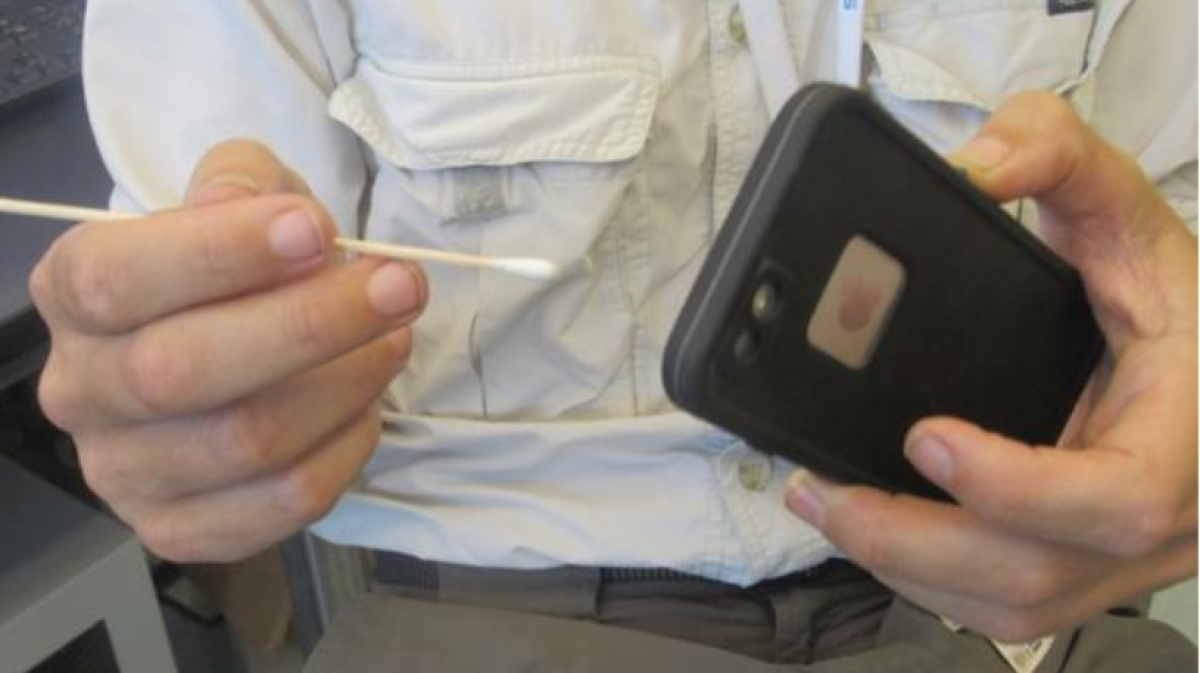What police can learn about you from the skin chemicals on your cell phone
Reporting from San Diego â Police might one day be able to size up the habits and lifestyles of crime victims and suspects by analyzing the skin chemicals they leave behind when they touch their cellphones.
In a proof-of-concept study released Monday, UC San Diego researchers recovered and processed enough of these chemicals from targeted cellphones to get a partial snapshot of what food the phone users recently ate, which beauty and hygiene products they used and which locations they may have visited.
The chemicals also can reveal whether the phone users are male or female, whether they take certain medications such as antidepressants and perhaps even whether theyâre vegetarian or meat eaters.
Such information âshould help an investigator build an unbiased composite sketch of the person the phone belonged to,â said Pieter Dorrestein, the UC San Diego biochemist who led the study, which was published in the Proceedings of the National Academy of Sciences.

Dorrestein and project scientist Amina Bouslimani reported similar results using this technique to gather trace evidence from other everyday objects such as keys and pens.
Their exploration is part of a national effort to find ways to supplement fingerprinting, a science developed in the 18th century, and DNA analysis, which was incorporated into criminal trials in the late 1980s.
Forensics experts, law enforcement leaders and molecular scientists, among others, increasingly believe they will be able to precisely identify and scrutinize chemical signatures on items used by an individual or a few individuals. For example, a cellphone is typically used by one person.
If their endeavors prove successful, they might be able to greatly expand the places and things from which molecular evidence can be collected and examined to piece together a profile of a personâs activities and behavioral traits.
The UC San Diego method involves using a cotton swab to gather skin chemicals from the surface of a cellphone, then analyzing those chemicals with a mass spectrometer â a machine that helps categorize molecules based on the properties of their atoms. This was done for the 39 participants in the study.
âWe can detect thousands of molecules from a given object,â Dorrestein said. âMakes sense. They come from food, personal-care products, the environment you live in. But we can only annotate about 2% of the molecules we detect.
âWe can tell you things like, âThatâs [the pesticide] DEET,â indicating the likelihood of a person who went into a place where there are mosquitoes. Then we see sunscreens. That indicates a person who likes to live outside. If thereâs a lot of heavy makeup, that person is more likely to be a female than a male. These are the kinds of things we can learn from analyzing these kinds of chemistries.â
Other medications that Dorresteinâs team identified included hair-loss drugs, antidepressants, eyedrops and anti-inflammatory and anti-fungal creams. Food-oriented molecules included citrus, caffeine, herbs and spices, according to the study.
In the long run, scientists expect to understand more chemical signatures so they can annotate an ever-broader array of molecules.
On the phones tested, some of the molecular signatures were visible for a few days while others lasted for several months. The molecules were present even after the phones were cleaned, such as with wet wipes. Thatâs because they could be detected in cracks, edges or other parts of the phones that were hard to clean.
Conceivably, scientists might be able to use the spectrometer method for practical purposes other than law enforcement forensics work. The technology could, for instance, help doctors evaluate whether participants in a clinical trial are taking their prescribed medication or assist fashion designers to evaluate how a particular fabric interacts chemically with peopleâs skin.
Over the years, scientists have used cotton swabs to gather microbes off common objects, including pay phones and restroom sinks. But most of those studies involved processing the microbeâs DNA, which doesnât give the sort of lifestyle information that Dorrestein is trying to develop with his technique.
Robbins writes for the San Diego Union-Tribune
ALSO
Video shows motorist trying to run down woman, good Samaritans in Temecula parking lot
50 years ago, the Sunset Strip riots made L.A. the âmagicalâ epicenter of a revolution
UC lays the groundwork for a possible tuition increase at its two-day regents meeting
More to Read
Sign up for Essential California
The most important California stories and recommendations in your inbox every morning.
You may occasionally receive promotional content from the Los Angeles Times.










